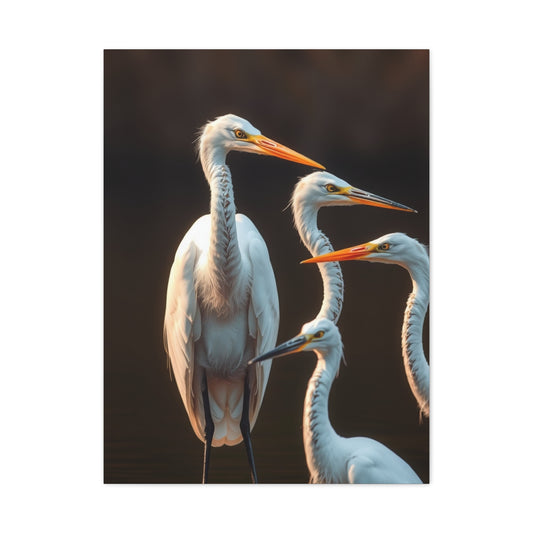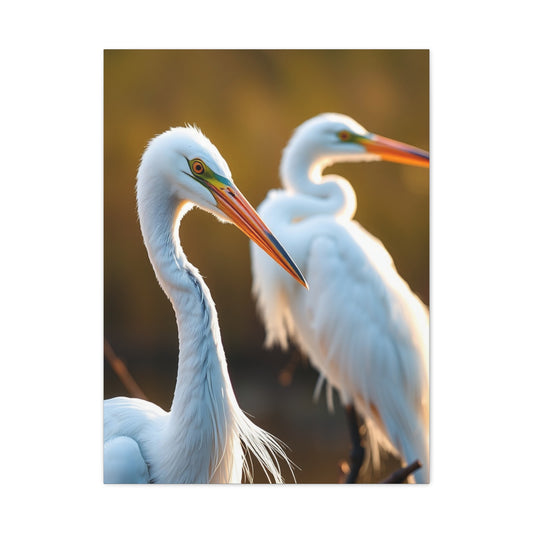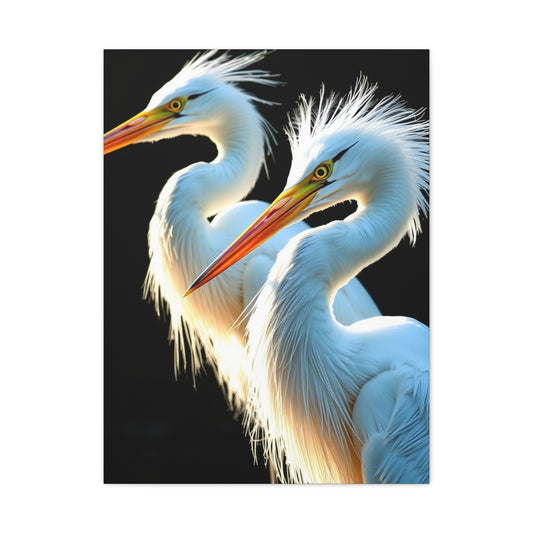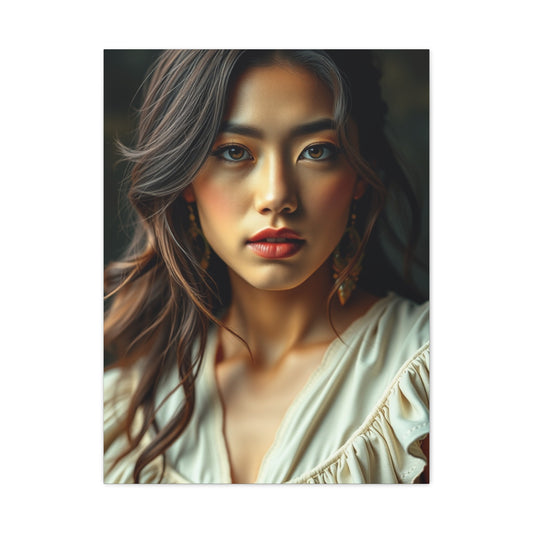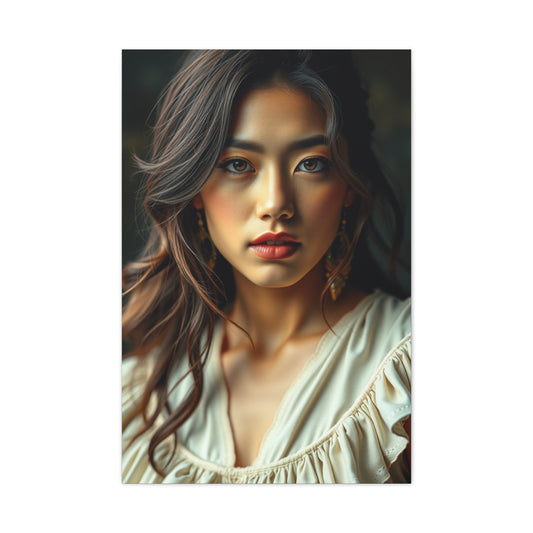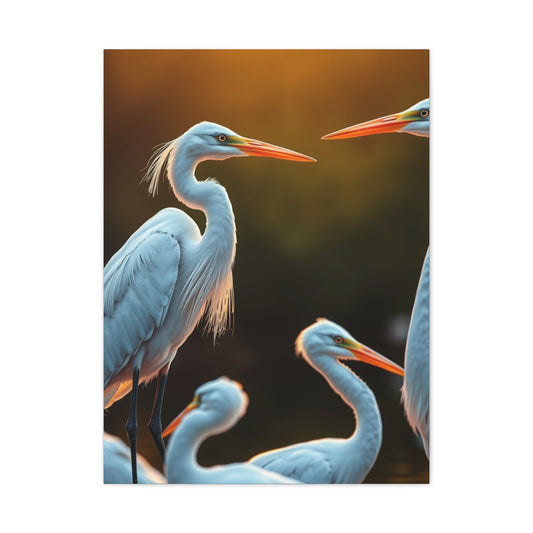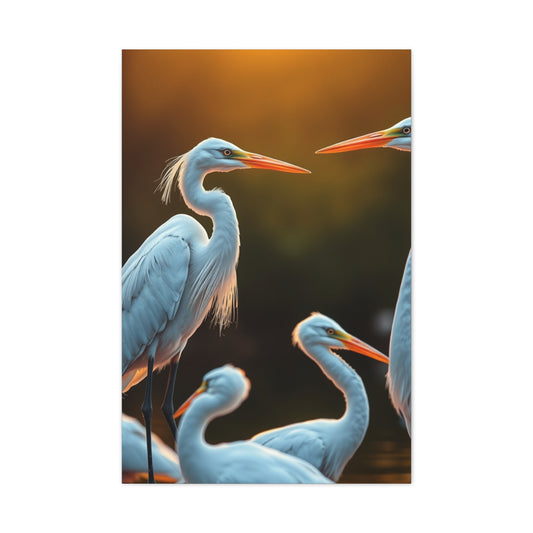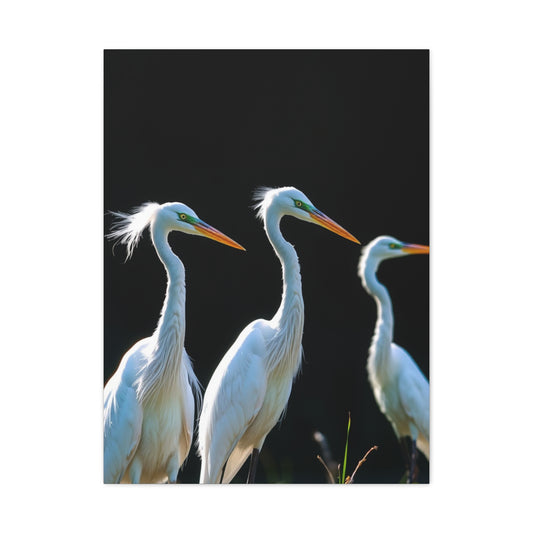Photographing in forests offers a magical blend of challenge and reward. Beneath the thick canopy of ancient trees lies a tapestry of texture, filtered light, and intricate details that beg to be captured. The forest is not a single subject, but a collection of stories woven into branches, leaves, shadows, and silence.
As someone who lives in the heart of Alaska’s Boreal Forest, I am constantly inspired by the tall, slender spruce, delicate birch, and quaking aspens that surround me. With every walk through the woods, I discover new compositions—moments where the interplay of light and form tells a quiet story worth preserving. Whether you’re wandering through your local woodland or trekking deeper into remote wilderness, these woodland photography tips will help you capture more than just scenery—they’ll help you create art rooted in emotion and atmosphere.
1. Look Up to Capture Vertical Majesty
One of the most accessible yet visually arresting forest photography techniques involves shifting your gaze skyward. By positioning your camera low and angling it upward toward the treetops, you radically alter the perspective and invite viewers into the towering world of the woodland canopy. This change in angle creates a sense of immersion, as if the viewer were standing at the foot of giants, craning their neck to admire nature’s organic skyscrapers.
Shooting vertically in the forest draws attention to the height, scale, and density of the trees. The upward perspective accentuates the linear structure of trunks converging into the canopy, forming natural vanishing points that pull the viewer’s gaze deep into the frame. These lines often work as strong compositional elements, guiding the eye and adding a sense of depth and grandeur. The patterns created by overlapping branches, gaps of light, and foliage textures can be visually compelling when framed thoughtfully.
This method works particularly well in tall forests where verticality dominates the visual landscape—think redwoods, firs, pines, or the tall black spruce of the Boreal regions. The straight lines of tree trunks juxtaposed with the chaotic lacework of branches and leaves create a visual rhythm that’s both structured and organic.
For the best results, choose a wide-angle lens. A lens in the 14mm to 24mm range allows you to encompass more of the forest above, stretching the perspective and exaggerating the sensation of scale. However, be cautious of lens distortion and ensure your horizon line or vertical subjects don’t appear unnaturally curved unless that effect is intentional.
Early morning or late afternoon, when the sun filters through the canopy at an angle, offers ideal lighting for this type of composition. The interplay of shadows and light beams can accentuate the dimensionality and add a magical quality to your images. Even diffused overcast light can help highlight textures and fine details without the distraction of harsh contrast.
To add further interest, look for breaks in the canopy that form shapes or patterns, such as circles of sky surrounded by tree limbs, or clusters of branches forming a natural frame. Using these elements, you can create unique visual compositions that offer more than just a documentary-style image—they evoke emotion and wonder.
Technically, it's important to expose for the highlights when shooting upward, especially if the sky is visible. Forest canopies can cause extreme contrast between the bright sky and the shadowy undergrowth. Using spot metering or adjusting your exposure compensation can help avoid blown-out skies or silhouettes lacking detail.
|
Related Catagories: |
This approach to forest photography not only showcases the vertical majesty of trees but also allows you to communicate scale, space, and serenity. By simply shifting your perspective upward, you bring your audience into a shared experience of awe—an essential emotion in nature photography.
2. Capture the Canopy with Aerial Perspectives
Aerial photography has revolutionized how we interpret and document forests. Once a privilege of professional filmmakers and pilots, the accessibility of drone technology now allows nature photographers to ascend above the treetops and observe the landscape from an entirely different dimension. This bird’s-eye view presents the forest as a living tapestry—one defined by texture, density, and seasonal transformation.
When you elevate your viewpoint, the narrative of your photography shifts. No longer limited to ground-level compositions, you begin to see how trees relate to one another, how clearings interrupt dense clusters, and how natural lines and color shifts define the larger topography. The visual language of the forest changes: what seemed chaotic and random from below often resolves into patterns and repetition from above.
In the heart of winter, a forest blanketed in snow takes on a near-abstract quality. The uniformity of snow-covered evergreens resembles a monochromatic quilt, softened by the diffused light of overcast skies. Every branch becomes a line, every gap in the canopy a negative space. These minimalist images are not only beautiful but emotionally resonant, evoking feelings of isolation, stillness, and natural symmetry.
In contrast, autumn turns the forest into an explosion of hues. From the sky, golds, reds, and oranges intermingle in swaths that resemble stained glass. Drone photography during this season captures the collective brilliance of deciduous forests as they transition, offering compositions rich in both texture and tonal variation. From above, the forest's complexity transforms into visual poetry—each color a stanza, each pattern a line.
Timing and weather are crucial for aerial shots. Clear skies are ideal when your goal is to emphasize the details and structure of the treetops. Early morning and late afternoon light adds softness and warmth, reducing glare and deepening shadow textures. On the other hand, mist and fog introduce an ethereal quality to your images. Layers of mist rolling through tree tops create visual separation and add an atmospheric depth that can’t be replicated in post-processing.
Compositionally, think about what story your aerial image is telling. Instead of simply pointing your drone downward, look for interesting shapes and alignments—winding trails, rivers cutting through the trees, or sudden changes in tree types. Use the rule of thirds and leading lines even from the sky. The forest, viewed from above, still responds to traditional compositional techniques, and these tools can help organize vast, detailed scenes into clear visual messages.
Aerial photography also offers environmental storytelling opportunities. You can capture the transition from untouched forest to cleared land, document natural disruptions like fallen trees after a storm, or showcase the harmony between wildlife habitats and the larger ecosystem. These perspectives not only create striking visuals but contribute to a deeper understanding of forest environments.
Safety and legality should always be a top priority. Always fly your drone within legal limits, avoid disturbing wildlife, and respect no-fly zones, particularly in protected areas and near human settlements. Ethical nature photography means balancing creative ambition with environmental stewardship.
Post-processing your aerial forest images requires a careful hand. Boosting contrast slightly can help define tree boundaries. Color grading, particularly in autumnal scenes, can enhance the natural palette. But be cautious—overprocessing can rob the image of its authenticity and subtlety.
The forest canopy seen from above is not merely a subject—it becomes a character in your photographic story. Through aerial forest photography, you create a narrative of scope, structure, and seasonal change. It is a form of visual exploration that reveals what’s hidden from ground view and celebrates the interconnectedness of the natural world.
3. Use Moonlight to Create Dreamlike Nocturnes
Forests by moonlight possess a rare, tranquil beauty that can’t be replicated during daylight hours. With the sun gone, the woods transform into a shadowy realm of mystery and enchantment. Photographing this transformation invites a completely different creative mindset, one grounded in patience, silence, and sensitivity to subtle light. The full moon, in particular, offers just enough illumination to breathe life into the landscape without overpowering its stillness.
A moonlit forest has a naturally cinematic quality. The lunar glow casts silvery highlights along tree trunks and across the forest floor, revealing textures that remain hidden during the day. Twigs glisten with dew, ferns take on a ghostly translucence, and shadows stretch long and soft like watercolors. These conditions are ideal for crafting images that feel poetic, atmospheric, and otherworldly.
To succeed in this low-light setting, your equipment needs to match the environment. A camera with strong high ISO performance is essential, and pairing it with a fast lens—ideally f/2.8 or wider—allows you to gather more light with each shot. A sturdy tripod is non-negotiable. Even the slightest camera shake can render your long exposures unusable, so stability is critical.
Your exposure settings will vary depending on the moon's brightness and cloud coverage. On a clear night with a full moon, a good starting point is ISO 1600, aperture at f/2.8, and shutter speeds between 5 to 15 seconds. This balance often captures just enough light while preserving the nighttime mood. Always shoot in RAW to retain maximum detail and flexibility in post-processing.
Composing for moonlight differs from daylight photography. Shadows become integral design elements, not just byproducts of light. Consider how they fall across paths, stones, or foliage, and use them to guide the viewer's eye. Look for open glades or naturally spaced trees where the moonlight can pour in unobstructed. These small clearings act like natural spotlights, illuminating select areas of the forest and adding visual intrigue.
Foreground interest is especially important at night. A gnarled tree root, a winding trail, or a moss-covered rock can serve as grounding elements, offering context within an otherwise dark composition. These elements also help create a sense of scale, grounding your viewer in a tangible place while the moonlight dances overhead.
Mist and fog, when present, enhance the mood even further. The moon’s light diffuses through airborne moisture, scattering into soft beams and subtle halos. These conditions lend your images a dreamlike veil, imbuing the scene with both mystery and magic.
Remember, moonlight scenes often lean toward cooler tones—silvers, blues, and grays. Leaning into this color palette during post-processing helps preserve the atmosphere. Avoid warming the image too much, as it can strip the scene of its nocturnal character.
Photographing the forest under moonlight is not just about capturing an image; it’s about entering a quiet, slow-moving world. The best photos often result from lingering in a single spot, observing how the light changes as the moon moves across the sky. It’s a contemplative process that reflects the very nature of the woods at night—calm, introspective, and endlessly layered with subtlety.
4. Frame the Stars Through Woodland Arches
While forests offer ample inspiration during daylight, they become even more evocative when darkness falls and the sky unfurls its celestial tapestry. Astrophotography from within the woods presents a unique compositional challenge—and a creative reward unlike any other. Rather than capturing expansive, open-sky vistas, this technique focuses on using the forest itself as a framing device for the stars above.
The canopy of a forest forms a natural window to the cosmos. By looking up through a ring of silhouetted trees, you can create images that feel enclosed yet infinite. This interplay between the confined forest and the boundless sky adds emotional depth and spatial tension to your astrophotography.
Start by scouting locations during daylight hours. Look for symmetrical tree clusters or natural openings where you can clearly see the sky. Wide-angle lenses are essential here—not only do they allow you to capture more of the night sky, but they also exaggerate the framing created by the treetops. A 14mm or 20mm lens is typically ideal.
When night falls, prepare for a shoot that blends the technical demands of astrophotography with the artistic instincts of landscape photography. Your settings should be optimized for capturing starlight: typically, ISO 3200 to 6400, an aperture of f/2.8 or wider, and shutter speeds ranging from 10 to 30 seconds, depending on your focal length. Use the 500 Rule (500 divided by focal length) as a guide to avoid star trailing.
In northern locations like Alaska, the aurora borealis frequently dances above the trees, adding kinetic energy and vivid hues to the forest sky. Capturing aurora within the frame of trees requires agility—you’ll need to adapt quickly as the lights shift position. Using a headlamp with a red light setting helps you move and adjust gear without ruining your night vision or disturbing your scene.
Framing celestial subjects with trees not only provides visual context but also makes your astrophotography feel more grounded and narrative. The juxtaposition of Earth and sky, of rooted branches reaching toward distant stars, creates a story that transcends simple night photography. It evokes age-old human themes of wonder, exploration, and connection with the universe.
In addition to the Milky Way and aurora, consider star trails as a creative technique. By stacking multiple long exposures, you can depict the Earth’s rotation through spiraling trails above a fixed forest foreground. Silhouetted trees against a swirl of starlight make for hauntingly beautiful compositions. Just be sure your tripod is completely still, and use a remote shutter release or intervalometer for consistent exposures.
Light pollution is the enemy of woodland astrophotography. Choose remote locations far from city lights, ideally with clear horizons and minimal ambient glow. The darker your surroundings, the more detail you’ll capture in the stars, and the more pronounced your contrast between canopy and sky will become.
Finally, post-processing can refine your results without distorting the authenticity of the scene. Focus on balancing noise reduction with clarity, and adjust contrast to enhance the silhouette of the trees without losing the delicacy of the starlight. The goal is to retain the raw emotional pull of the moment you captured—stillness, awe, and the timeless interplay between forest and firmament.
Photographing stars from within the woods is more than a technical exercise—it’s a form of visual storytelling that bridges the terrestrial with the cosmic. Each image becomes a quiet meditation on scale, silence, and the enduring wonder of night in the forest.
5. Transform Trees into Silhouettes
In the fleeting minutes that bracket sunrise and sunset, forests enter a dramatic visual transformation. Details retreat into darkness, and light becomes more about shape than texture. It is during this transitional phase—when the sky still holds ambient glow, but the land is enveloped in shadow—that trees begin to take on a bold new role: that of pure silhouette.
Silhouette photography in the forest is a celebration of form and simplicity. As the colors of the sky shift from deep blue to fiery orange or soft lavender, tree trunks, limbs, and leaves become stark outlines etched against an ever-changing canvas. These shapes, now free from detail, take on graphic qualities that emphasize their natural geometry and structure. Silhouettes speak through shape alone, evoking mood and mystery with striking minimalism.
To craft a successful silhouette, positioning is everything. Seek out locations where trees stand clearly against an open backdrop. Sparse forests, clearings, and hillsides with views of the horizon are ideal. A solitary tree on a ridge or a group of pines rising against the twilight sky can serve as powerful subjects. Avoid cluttered scenes where overlapping branches create visual confusion, as silhouettes thrive on clarity and contrast.
Lighting plays a crucial role. The ideal time is known as the “blue hour”—a period shortly after sunset or just before sunrise when the sky is still luminous, but direct sunlight has faded. This residual light behind the subject enhances separation, turning the dark forest elements into clean silhouettes. If you're shooting during sunset, position yourself so the fading light is behind the trees; this backlighting is essential to create the contrast that silhouettes demand.
Camera settings for silhouette photography should prioritize exposure for the sky rather than the trees. Use spot metering or underexpose slightly to prevent the sky from blowing out. A typical manual setting might include an ISO around 200 to 400, an aperture of f/8 to f/11 for sharpness across the scene, and a shutter speed that matches your ambient light—usually between 1/60 to 1/200 second during blue hour. Bracketing exposures can help you find the perfect balance between sky color and shadow definition.
Silhouettes can be rendered beautifully in both color and black-and-white. In color images, the gradient of the sky becomes the backdrop to the trees’ bold outlines. In black-and-white conversions, tonal contrast becomes the focus, emphasizing mood over vibrancy. This monochrome approach is particularly effective in foggy conditions, where subtlety and negative space enhance the ethereal quality of the image.
Compositionally, silhouettes benefit from simplicity and strong shapes. Consider vertical alignment with towering trees, or horizontal framing when photographing a line of trunks. Look for repeated patterns or rhythmic spacing between trees. Negative space between branches or trees can become just as important as the forms themselves. Use this space to breathe life into your composition and guide the viewer’s eye through the frame.
Don’t overlook the emotional potential of silhouettes. Unlike detailed images, which inform, silhouettes invite interpretation. They whisper rather than shout, often conveying solitude, mystery, or reflection. Whether capturing a lone pine against a twilight sky or a row of darkened trunks beneath a pastel horizon, these scenes evoke feelings that words cannot express.
Silhouette photography in the woods is a dance between light and shadow. It asks you to see not what the forest reveals, but what it conceals—and in that concealment, find meaning.
|
Related Catagories: |
6. Master Low-Light Techniques with the Right Gear
When daylight wanes and the forest descends into shadow, many photographers pack up their gear and head home. But for those willing to embrace the challenges of low-light conditions, this period holds immense creative potential. Forest photography in low light is about harnessing subtlety—finding the whispers of light that remain and using them to tell stories veiled in mystery, quietude, and atmosphere.
The first and most essential piece of equipment for low-light woodland photography is a solid tripod. Even the steadiest hands can’t compensate for the long exposures required after dusk. A tripod not only stabilizes your camera but also frees you to compose carefully, wait patiently, and experiment with precision. Look for one that’s sturdy, lightweight, and easy to set up in uneven forest terrain.
Next, equip your camera with a fast lens—one with a wide maximum aperture like f/1.8, f/2, or f/2.8. These lenses allow more light to reach your sensor, which is invaluable in dim environments. While wide apertures do reduce depth of field, that shallow focus can work to your advantage, especially when isolating details like a backlit leaf or moss-covered branch.
ISO settings are a balancing act in low light. Increasing ISO boosts sensor sensitivity and allows faster shutter speeds, but it also introduces noise. Fortunately, many modern cameras handle high ISO well. Start with ISO 1600 as a baseline, adjusting upward or downward based on your specific lighting and desired effect. In particularly dark scenes, you may need to go to ISO 3200 or even 6400, especially if you're working handheld and need to maintain a minimum shutter speed.
Manual mode is essential in low-light situations. Auto settings often fail in darkness, either overexposing highlights or underexposing shadows. With manual controls, you dictate the balance. Try settings like f/2.8, 3 to 5 seconds, and ISO 1600 for evenly lit moonlit scenes. If working with only ambient starlight or distant artificial glow, slower shutter speeds may be needed—up to 20 or 30 seconds.
Manual focus is another critical skill. Autofocus systems struggle in low contrast, especially in forest settings with little light. Switch to live view mode, zoom in on your subject digitally, and focus manually for sharp results. If your lens has focus markings, these can be helpful, especially for infinity-focus shots like starscapes or silhouettes.
Composition in low light benefits from simplification. Since detail fades, focus on bold shapes, guiding lines, and contrasting light sources. Look for areas where moonlight or artificial light filters through branches, pools on rocks, or glimmers off water. These small illuminations become beacons within the darkness, offering structure and visual hierarchy.
Use of remote shutter releases or self-timers is also advised. Even a gentle press of the shutter button can cause camera movement during long exposures. A remote or a two-second timer helps preserve sharpness and ensures consistency when bracketing shots or capturing multiple exposures for stacking or blending.
Post-processing plays a significant role in refining low-light images. Adjusting shadows and highlights, reducing noise, and enhancing contrast can help bring your scene to life without losing its natural essence. Be subtle—over-editing can strip away the authenticity and mood that make low-light forest photography so compelling.
Shooting in RAW is non-negotiable in these conditions. RAW files retain far more information than JPEGs, particularly in dark areas where dynamic range is limited. This gives you much more control when fine-tuning exposure, white balance, and color balance in post-production.
Finally, patience and preparation are your greatest allies. Scout locations in advance. Know where the moon will rise or where artificial light sources are located. Dress warmly, bring a flashlight or headlamp with a red beam (to preserve night vision), and give yourself time to slow down and absorb your surroundings.
The forest in low light is not silent—it whispers in texture, tone, and shadow. With the right gear and thoughtful technique, you can capture that whisper and share its story with depth and subtlety few environments can match.
7. Harness Golden Hour Light in the Woods
The golden hour—the period shortly after sunrise or just before sunset—is revered among photographers for good reason. In the forest, this window of light becomes even more magical. When filtered through branches and drifting mist, the low sun transforms the woodland into a scene of golden radiance and quiet poetry. Soft beams of warm light pierce the canopy, touching mossy trunks and leaf-strewn trails with a painterly glow.
Golden hour in the woods doesn’t offer uniform lighting. Unlike open landscapes where the light spreads evenly across fields and mountains, the forest allows it to slip in selectively. What you often get are fragmented patches of brightness, slanting shafts of sun, and pockets of glowing atmosphere. This fractured light creates natural vignettes and high-contrast areas that help isolate subjects and shape visual depth.
To make the most of these fleeting moments, you’ll need to move deliberately and anticipate where the light will land. Scout locations ahead of time and revisit the same spots to learn how the sun interacts with the forest’s unique structure. A slight change in position or angle can turn an ordinary scene into one that feels alive with light and story.
Because forest lighting during golden hour is constantly shifting, flexibility is crucial. Light can vanish in seconds behind a branch or tree trunk, so your camera settings must be quick to adjust. If you’re shooting handheld, start with a slightly elevated ISO—between 400 and 800—especially if you’re using a telephoto lens or photographing in a denser part of the forest where light levels are low. A wide aperture, such as f/2.8 or f/4, helps collect light and introduce shallow depth of field, which can beautifully blur the background while keeping your subject crisp.
Golden hour is also a prime time to capture backlighting. When the sun is low and behind your subject, it can illuminate the edges of leaves, grasses, and branches with a luminous rim of light. This creates a sense of dimensionality and visual warmth. Use this effect deliberately—position your camera so that the subject catches the light just right, allowing you to emphasize its contours and structure.
If mist or fog is present, the magic amplifies. The sunlight interacts with water particles in the air, creating visible rays and glowing ambiance that feel almost surreal. These conditions are fleeting but worth the wait. A shaft of light filtered through morning fog can turn an empty forest path into a luminous corridor of light and texture.
Keep in mind that the warmth of golden hour can sometimes cause your images to skew heavily toward yellows and reds. This is not a flaw—it’s part of the aesthetic. However, if you’re shooting in RAW, you’ll have full flexibility during editing to adjust white balance or tone down any overpowering color cast while preserving the rich ambiance.
In terms of composition, golden hour light enhances contrast between sunlit and shaded areas. Use this interplay to highlight subjects or lead the viewer’s eye along a trail, branch, or fallen leaf. Look for repeating patterns or contrasting textures—a single golden leaf on a shadowed log, or a beam of light catching the curve of a tree trunk.
Golden hour forest photography is not just about beautiful light; it’s about emotion. These warm moments convey tranquility, hope, and renewal. They invite the viewer to pause, breathe, and be present in the stillness of nature. Every image taken during this time is a quiet celebration of transition—the passage from night to day, or day into dusk.
8. Use Midday Light for Bold Contrast
Midday is often dismissed by photographers as the worst time to shoot. The overhead sun creates harsh highlights, flat colors, and deep shadows—elements many strive to avoid. But in forest photography, midday presents a unique opportunity. Rather than a visual hindrance, the interplay of strong light and dark shadow can be used as a compositional asset.
Forests filter sunlight through countless layers of branches and leaves. This natural diffusion results in concentrated light beams that puncture the canopy and form isolated pools of brightness on the forest floor. These sharp contrasts between illuminated and shadowed areas provide structure and drama, transforming the forest into a high-contrast canvas of shape and tone.
The first step to mastering midday forest photography is embracing the directional quality of light. Watch for shafts of sunlight cutting through gaps in the trees. These beams act as natural spotlights, drawing attention to specific elements like a tree stump, mossy rock, or fern unfurling in the undergrowth. By placing your subject within these highlights, you can make it pop with contrast and focus.
Exposure control is key when working in these conditions. Bright spots and deep shadows in the same frame create a wide dynamic range, challenging your camera’s sensor. To avoid blowing out highlights or losing detail in shadows, consider using exposure bracketing or shooting in RAW to preserve tonal information. Spot metering on the brightest part of your subject and adjusting in post-processing can help balance the final image.
If your camera has a high dynamic range sensor, you can capture more detail in both ends of the light spectrum. Alternatively, blending exposures manually in editing software allows you to maintain detail across the board. Use these techniques to bring out the subtle textures and tones that might otherwise be lost.
During midday, compositions often benefit from graphic simplicity. Use shadow lines to carve space in the frame or define pathways through the woods. Shadows can also enhance a sense of rhythm and repetition, especially when falling across similar subjects like a row of tree trunks or a cluster of stones. Look for strong shapes and avoid overly busy backgrounds—contrast is your friend, but too much complexity can dilute the impact.
One technique that excels during midday is shooting directly into the sun. Known as contre-jour, this method involves backlighting your subject and allowing the sun to flare or outline shapes. In forests, this can highlight the translucence of leaves or the halo effect around fine branches. Use a narrow aperture such as f/16 to achieve sunbursts through foliage, and position yourself so the sun is partially blocked for a softer glow.
Color during midday can feel washed out, especially in broad scenes. But within the forest, vibrant greens often intensify under direct sunlight, while shadowed areas deepen to cooler, richer tones. This duality creates a natural color contrast that adds vibrancy and texture. If you find the color range too harsh, consider converting to black and white—high contrast lighting translates beautifully into monochrome, emphasizing form and structure over hue.
Reflections can also become prominent during midday. Sunlight hitting a stream, wet rocks, or dew-covered leaves creates sparkling highlights that add texture and luminosity. These reflections can act as visual accents or compositional anchors, guiding the eye through your frame.
When shooting at noon, timing still matters. Positioning and framing are critical to ensure your subject benefits from the hard light rather than being overpowered by it. Slight shifts in angle can eliminate glare, soften contrast, or enhance focus. Trust your instincts and remain adaptive to the light’s behavior.
Photographing forests at midday is about seeing possibility in limitation. When others put their cameras away, you have the chance to create bold, contrast-rich images that explore the forest's dynamic textures and changing light. It’s a different kind of beauty—less delicate, more dramatic—but no less rewarding.
9. Take Advantage of Overcast Days for Delicate Details
Cloudy weather is a hidden gift for forest photographers. Overcast skies provide soft, diffuse lighting that brings out subtle tones and eliminates harsh shadows. This lighting condition reveals the intricate details of bark, undergrowth, and foliage in a way that direct sun often obscures.
The entire forest becomes more photographable during these conditions, allowing for consistent exposure and color balance. It’s an ideal time to explore intimate compositions and wide shots alike, especially when the mood you’re after is serene, introspective, or soft.
10. Focus on the Forest’s Finest Details
With so much visual complexity in wooded environments, narrowing your focus can yield strong, story-driven images. Find a solitary fern lit by morning light, a mushroom emerging from moss, or a cluster of autumn leaves catching sunlight.
Zoom in on these scenes and use a wide aperture to blur the background into creamy softness. This draws attention to your subject while simplifying the chaos around it. Look for elements that symbolize the season or location, making your images both beautiful and narrative.
11. Tell Stories Through Small Scenes
Not all forest images need to be sweeping landscapes. Sometimes, a tight composition of a fallen branch, a patch of snow, or a glistening spiderweb tells a more compelling story. These images offer context—what time of year it is, what life exists beneath the canopy, and how weather impacts the environment.
These smaller vignettes benefit from telephoto or macro lenses. Use shallow depth of field to isolate your subject and remove distractions. Such focused storytelling invites the viewer to appreciate the finer layers of woodland life.
12. Build Compositions Using Foreground Anchors
One of the most effective forest photography strategies is to create compositions that combine foreground, midground, and background. Start with an engaging subject in the foreground—a textured rock, flower, or tree trunk—and let it lead into a broader scene.
Use a wide-angle lens to exaggerate perspective and connect the close details with the broader landscape. Pay careful attention to your depth of field to ensure the background remains supportive without stealing attention. This approach adds scale, depth, and cohesion to otherwise busy forest scenes.
13. Shift Your Focal Length to Suit the Scene
No single lens fits every forest situation. Wide angles are excellent for immersive, expansive shots that convey scale. However, they can also make a scene appear chaotic if not composed thoughtfully. On the other hand, telephoto lenses isolate details, compress distance, and create a more intimate relationship between elements.
Experiment with different lenses in the same setting. A scene that looks overwhelming at 18mm might feel composed and balanced at 135mm. Let the scene dictate your lens choice, always asking what story you’re trying to tell through scale and perspective.
14. Use Monochrome to Highlight Texture and Tone
Forests are exceptionally well-suited for black-and-white photography. Without color, the viewer’s attention shifts to light patterns, contrast, and texture. Look for scenes with strong directional light, prominent shadows, and defined shapes—elements that translate powerfully into grayscale.
Backlighting, for instance, becomes particularly effective in monochrome. It adds luminosity to leaves and outlines to branches. Deep shadows also help reduce clutter, turning busy backgrounds into dark canvases that emphasize your subject.
Converting to black-and-white during post-processing offers flexibility. Use tools that allow you to adjust how different color channels translate into grayscale, ensuring that your final image captures the mood and structure you envisioned.
Conclusion: Finding Stillness and Story Among the Trees
In the heart of the forest, everyday noise fades. There is no traffic, no screen, no demand for speed. Forest photography is a meditative pursuit—one that requires stillness, awareness, and patience. With a camera in hand, the woodland becomes not just a place to document, but a place to observe and connect.
Every forest—no matter how small or grand—holds stories waiting to be found. Whether you're photographing a majestic treetop at dusk or a delicate mushroom on a mossy floor, the forest rewards those who take the time to truly see.
So walk the trails. Linger a little longer at that shaft of light. Revisit the same path in every season. Learn the language of the woods through your lens, and share what you discover with the world.










